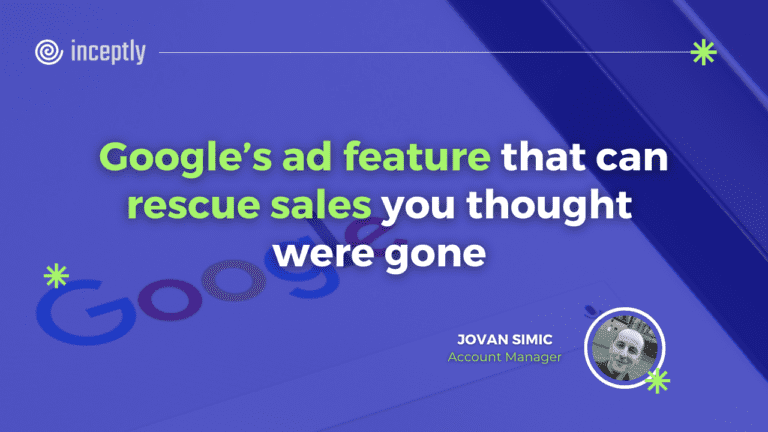
Google Ads remarketing allows you to show tailored ads to people who have already visited your website retargeting them as they browse other sites or search on Google. When users leave your site without making a purchase, remarketing helps you reconnect with them by displaying relevant ads across the web. These ads can show up on other websites, mobile apps, and even on searches they perform later.
Remarketing helps keep your brand top-of-mind, increasing the likelihood that these users will return to your site and complete a purchase. This strategy targets people who have already expressed interest, making your advertising efforts more efficient and effective.
You can configure Google Ads to track user behavior on your website. When someone visits your site, their cookie ID is added to a remarketing list. Then, you can create custom ads to display on this list, encouraging users to come back and convert.
Want to brainstorm with our team on new ways to scale your business with YouTube Ads (and other performance video platforms)?
Join us for a free YouTube ad brainstorming session👇
Google Ads remarketing options
Standard remarketing – This Google Ads feature allows you to show ads to your past visitors as they browse websites and apps on the Display Network.
Dynamic remarketing – A feature of Google Ads that lets you show ads, to past visitors, of any products or services that they viewed on your site
Remarketing list for Search ads– This Google Ads feature is also known as RLSA. It enables you to target past visitors on the Search Network. You can target and customize search ads for these past visitors while they search on Google and Google’s Search partner sites.
Video remarketing – Google Ads will allow you to serve ads to people who have interacted with your YouTube channel or other videos. You can serve them ads on YouTube or through Display Network videos and websites.
Customer match – If you have a list of emails from your customers, you can upload them to Google Ads. This feature enables you to serve ads to them if they are signed into Google Search, Gmail, or YouTube.
Remarketing for mobile apps– If someone uses your mobile app or mobile website, Google Ads will let you show ads to them when they use other mobile apps or are on other mobile websites.
How to create a remarketing campaign in Google Ads?
Getting started with a Google Ads remarketing campaign has three steps:
Setting up your remarketing tag
Creating remarketing audiences in Google Ads or GA4
Setting up your remarketing tag into your campaign strategy
You need to set up a method that ‘tags’ people who visit your website.
This helps you target them again later through your remarketing activity.
You can set tags in multiple ways but the two most popular methods include:
Google Ads tag is the basic and recommended version that you can set up in your Google Ads account1
Google Analytics remarketing gives you more control and targeting options for campaigns. You can set up advertising features in your analytics account. You can do this by enabling GA4 on your website, connecting your GA4 and Google Ads accounts, enabling remarketing and advertising features in your analytics account, and creating remarketing audiences in analytics and sharing it with your Google Ads account.
Remarketing audiences in Google Ads
After implementing a remarketing tag, the visitors to your site will be tracked. You can create advanced remarketing audiences based on how visitors interact with your site.
For example, you can create an audience list for people who visit a landing page and another list of people who complete a purchase.
This helps you target visitors based on what actions they performed on your site which improves personalisation and targeting.
Once your audiences are populated, you can use them to remarket too.

You can create more remarketing audiences via audience manager. Click the + sign to add relevant segments such as website visitors, app users, custom lists, and combinations:

Add relevant details and save your remarketing audience. Each segment is referred to as a list that can be accessed via Your data sources in Audience Manager:

You can check details of the segments and active users from Your data segments tab:

You can create multiple segments based on how you want to target people who visit your site.
Best practices for effective Google Ads remarketing
1. Use RLSAs
You can remarket to users via Google Search ads via RLSAs (Remarketing Lists for Search Ads) when they search for queries you target. RLSA’s only show to remarketing audience segments who have interacted with your website in the past. This is an ideal way to drive targeted traffic from search by reaching people who know your brand and products.
2. Leverage dynamic remarketing
Dynamic remarketing is essential for e-commerce stores that use a product feed via Merchant Center. Your tagging will need to accommodate dynamic remarketing with all the relevant events and parameters.
To set up dynamic remarketing for Display campaigns, you need to add the following elements to your Google remarketing tag:
Dynamic remarketing event snippet: This code snippet needs to be added to your website pages to capture information about products or services viewed by visitors. The snippet should include:
• Event name (e.g. view_item, add_to_cart, purchase)
• Product details like ID, name, price, etc.
• Custom parameters: Add custom parameters to your remarketing tag to pass dynamic values from your data layer. These typically include:
•ecomm_prodid: Product ID
•ecomm_pagetype: Page type (e.g. product, cart, purchase)
•ecomm_totalvalue: Cart value or purchase amount
Once set up, Google will automatically show previously viewed products in the Display ads, pulled from your product feed.
Once set up, Google will automatically show previously viewed products in the Display ads, pulled from your product feed.
3. Properly segment your audiences
The power of remarketing ads lies in audience segments.
In the absence of proper audience segmentation, you’ll end up retargeting everyone who interacted with your site with the same ad which might lack personalization – which might not be a bad thing depending on the user awareness stage – but going deeper with your audience segmentation will provide better results.
Begin by creating the following audience segments:
People who filled out a sign-up form on a particular page
Cart abandoners
Repeat site visitors
Viewers of service or pricing pages
People who interact with a blog post
Visitors from a specific location or geo
The segments you create should be driven by your business model, conversion length, and buying cycle.
Also don’t forget to exclude previous customers.
Effective Google Ads remarketing can transform your advertising approach by reconnecting with visitors who have already shown interest in your products or services. From understanding what remarketing is, exploring different types, creating targeted remarketing lists, to implementing best practices, every aspect is essential for driving successful campaigns. By following these strategies, you can maximize engagement and increase conversion rates.
Want to brainstorm with our team on new ways to scale your business with YouTube Ads (and other performance video platforms)?
Join us for a free YouTube ad brainstorming session:
Want more content like this?
Don’t miss out on the latest news and updates from the world of Direct Response advertising! Subscribe to our newsletter today 👇

Jovan Simic, Account Manager
Jovan Simic is an experienced media buyer responsible for over $30M in profitable ad spend. At Inceptly, Jovan has collaborated with prominent brands, including Advanced Bionutritionals, Amplify Solar, Fittrack, John Crestani, and The Social Man, demonstrating his versatility and expertise. His deep understanding of media buying and consistent track record of success make him an invaluable asset to the industry.
Like this post? Let's continue the conversation!
Get in touch with us by shooting us a quick email or tagging us on LinkedIn or Instagram, and sharing your thoughts. Your feedback helps us keep our blog relevant and interesting.
Get Our Newsletter
Need Help?
Get in touch with us for an insightful evaluation of your ads + actionable tips to help amp up your direct response revenue



